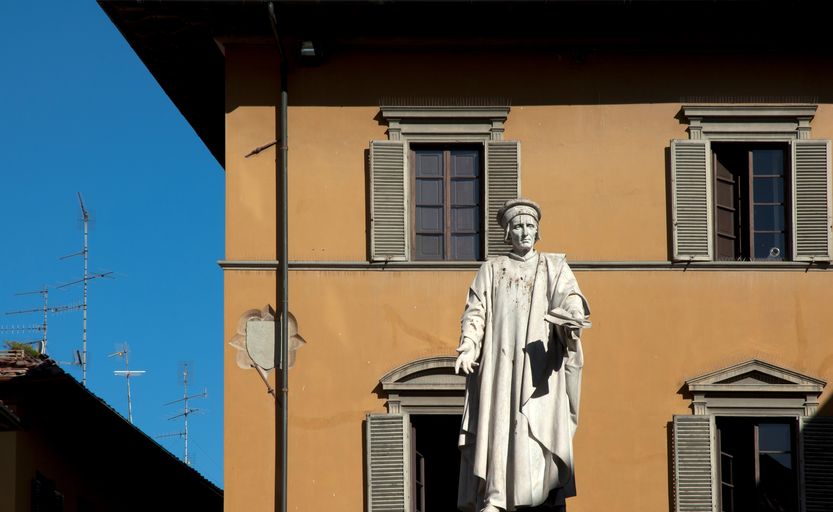
Municipality square A dive into the past between art, culture and an enchanting atmosphere
Piazza del Comune in Prato is a cozy space surrounded by vestiges of medieval buildings and neo-sixteenth-century architecture with airy arcades.
The square, created at the end of the 13th century at the intersection of the two medieval lines that divide the historic city into districts, is the political and topographical center of Prato. On its sides there are the Town Hall with its gallery and the Praetorian Palace, home to the museum of the same name. Originally sheltered by wooden arcades, the square was used as a meat, oil and grain market, as well as a place for public meetings and events. The current appearance and the sensation of unity that arises from it is due to the intervention of the architect Giuseppe Valentini between the end of the eighteenth century and the beginning of the nineteenth century.
In the center of the square stands the marble statue of the merchant Francesco di Marco Datini (1335-1410) created by Antonio Garella in 1896. The artist from Ferrara created a high pedestal, on which the figure rests, with the most representative scenes of life of the merchant through a high bronze relief. The location of the statue in Piazza del Comune is due to the fact that Francesco Datini was not only a merchant but also a benefactor as he founded the Ceppo Nuovo and his residence, now a museum house and seat of the State Archives, is located not far away.
The other important piece in the square is the Bacchino Fountain created by Ferdinando Tacca in the mid-17th century, thanks to the creation of the Condotta Reale delle Fonti, a pipeline that brought water from Filettole to the city center (1653). The little Bacchus playing with bunches of grapes is a twentieth-century copy while the original is sheltered from atmospheric agents on the ground floor of the town hall.
Information
- Prato (PO)
Accessibility for disabled: yes
Typology: Squares and monuments
It is part of the itineraries: City break in Prato



